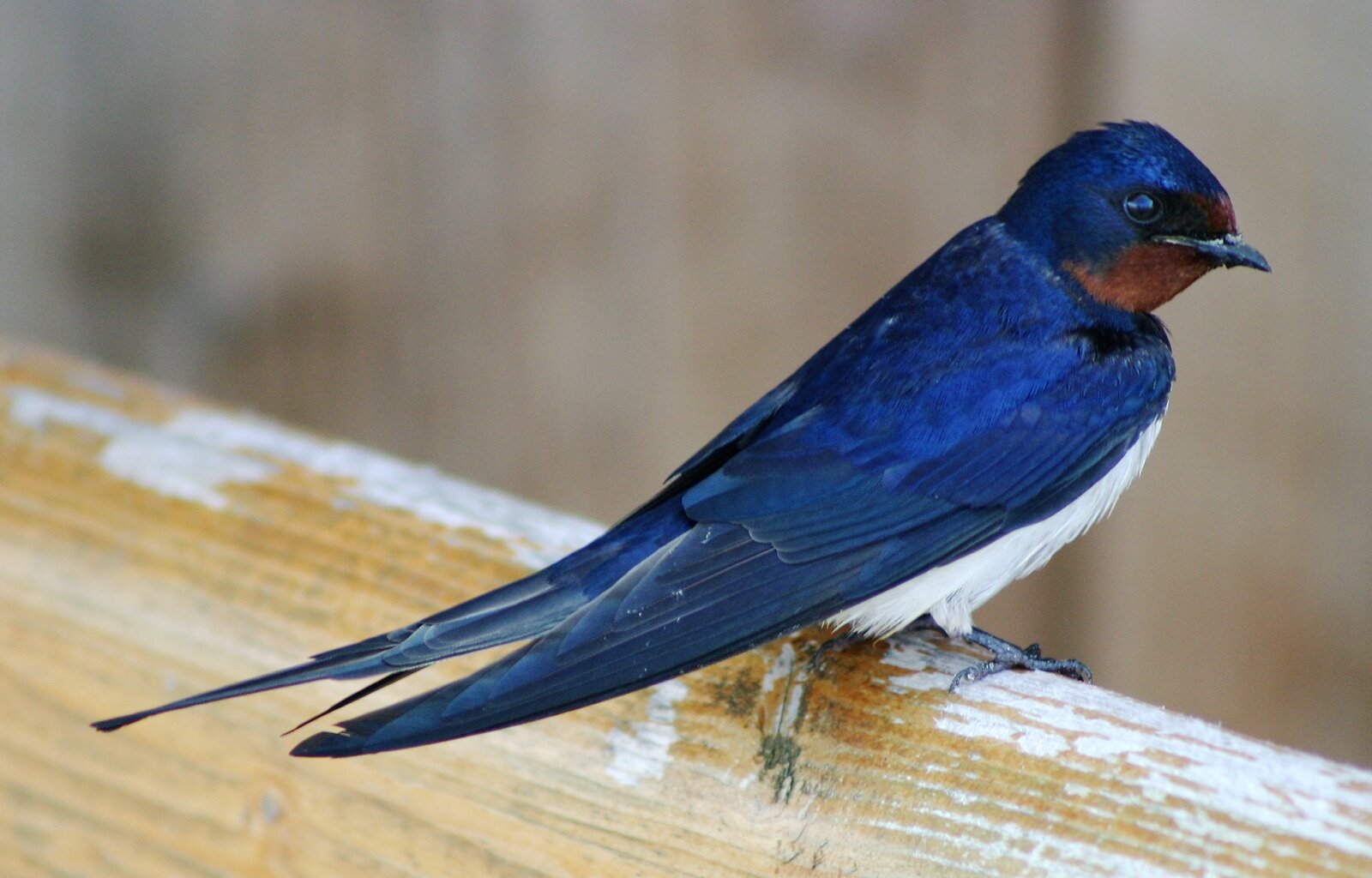Bird of the Week: Barn Swallow
Photo Courtesy of Wikipedia
Species: Barn Swallow, or Hirundo rustica
Family: Hirundinidae (Swallows and Martins)
Star sign: Sagittarius
Rating: 10/10
Ideal Date: Squatting in an abandoned Soviet-era housing complex
To millions of people across the globe, the humble Barn Swallow is a familiar presence. It is, after all, the most widely distributed and abundant swallow species on the planet; it can be found on every continent except Antarctica, summering in the northern hemisphere and wintering all the way in the southern hemisphere. Here in the U.S., the only place where you won’t find the brisk boys is the Mojave Desert. What a well-travelled and worldly little bird! Not only are Barn Swallows everywhere, but they like to get up close and personal with people. Barn Swallows used to nest in caves, but as soon as humans began building permanent structures such as houses, towers, and yes, barns, our flitting friend moved into its new home. Nowadays, the only Barn Swallows in America that eschew human housing for their traditional cribs are those which inhabit the Channel Islands off the coast of California. One can’t help but admire that these guys have been living in our buildings for thousands of years without paying rent.
Such a fascinating fellow has captured the human mind since antiquity. Virgil mentioned how it builds nests in human dwellings in his Georgics, and its return north was considered by the Greeks to be a sign of coming spring—including to Aristotle, who warned against taking one bird sighting as evidence of a whole season change. In Greek Myth, Procne, the sister of Philomel, was transformed into a swallow when her sister was more famously transformed into a nightingale. Their obvious symbiotic relationship with us has captured our attention for thousands of years, and continues to do so today; because of their global abundance, Barn Swallows are one of the most well-researched and understood bird species in the whole world.
Barn Swallows are most frequently found skimming low to the ground above fields, farmlands, and open bodies of water, snatching up bugs from the air. When taking breaks, they perch on wires and the tops of buildings, and their nests can be found attached to the high nooks and crannies of many man made structures. About the size of a sparrow, they have shiny, dark-blue backs, deep orange faces, and lighter orange stomachs. They can be differentiated from other swallows by their tail shape; these nimble neighbors are the only American swallow species with the iconic, two-pronged tail that is so closely associated with their family. Here at Reed, the sprightly songbirds can be most reliably spotted zigging and zagging over the dry grass of the sports fields, looking for their next snack. But make sure to catch them soon, because by November they’ll all have flown south for a pleasant, tropical winter.

